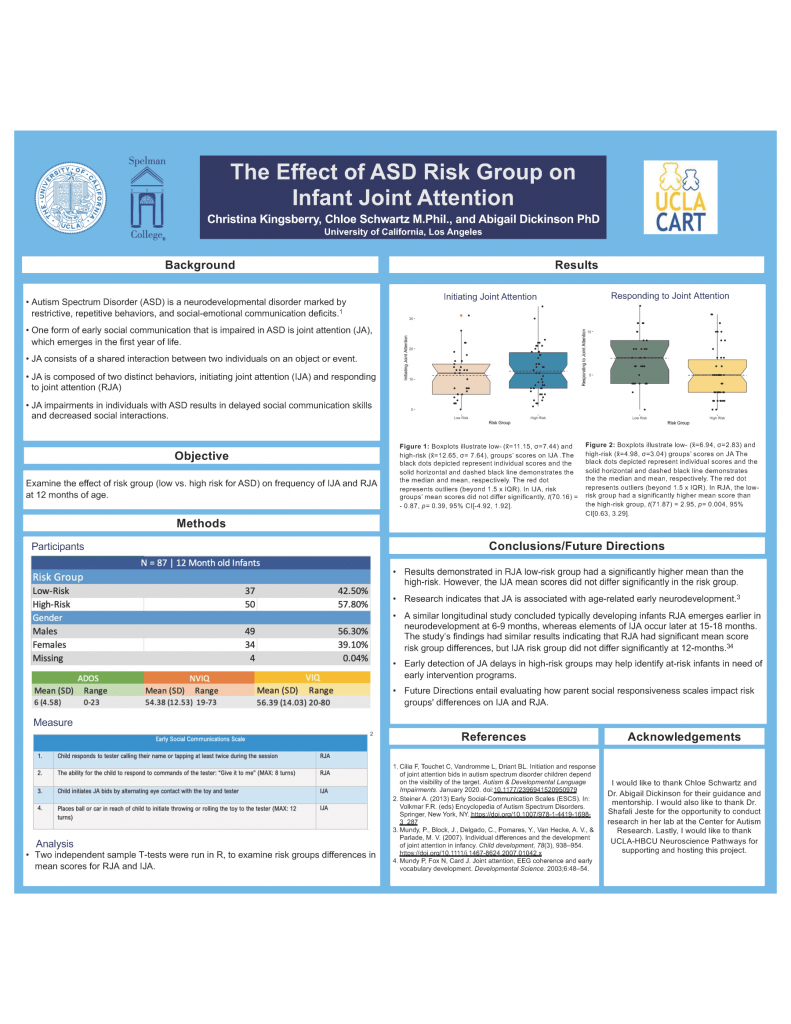
Christina Kingsberry
Abstract:
Autism Spectrum Disorder (ASD) is a neurodevelopmental disorder marked by restrictive, repetitive behaviors, and social-emotional communication deficits. One form of early social-communication that is impaired in ASD is joint attention (JA), which consists of a shared interaction between two individuals on an object or event. JA is composed of two distinct behaviors, initiating joint attention (IJA) and responding to joint attention (RJA). In typical development, JA emerges within the first year of life; however, JA-related behaviors, such as coordinated eye contact and protodeclarative pointing are both delayed in their onset and reduced in their frequency in infants later diagnosed with ASD. Using existing longitudinal data obtained across the first year of life for infants at both low and high risk for ASD (determined by absence or presence of family history of ASD, respectively), this study examined the effect of risk group on frequency of IJA and RJA at 12-months of age. N = 87 12-month-old infants (n = 37 low-risk; n = 50 high-risk) completed the Early Social Communication Scales, a structured interactive measure used to assess JA skills and social engagement. While risk groups did not differ significantly in IJA, the low-risk group had a significantly higher mean RJA score than the high-risk group. Literature findings had similar results indicating RJA had significant mean score risk group differences, but IJA risk group did not differ significantly at 12-months the study concluded this results from age-related neurodevelopment. If detected early, early intervention programs may help at-risk infants mitigate social-communication delays.

